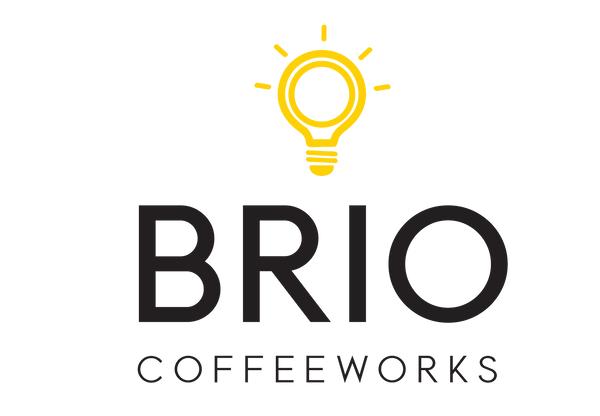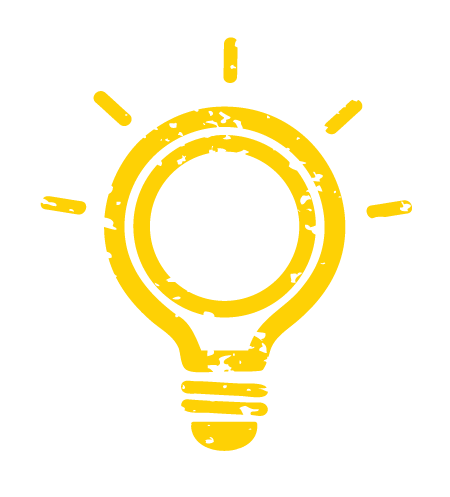The Decaf Project by James Hoffmann x Brio Coffeeworks
 Things to Know:
Things to Know:
Cupping Tips & Protocol
Coffee to Water Ratio and Cupping Vessels:
If you purchased the Acme cupping bowls, here are the parameters we use for cupping at the roastery with the exact same cupping bowls***:
- 10g coffee
- 182g water (200F)
- Grind size: the official Specialty Coffee Association guidelines call for a slightly coarser than pourover grind. We prefer a slightly finer than pourover grind.

**If you don't have these cupping bowls, not a worry! Just grab 4 vessels of the same size - can be mugs, cups, really anything, and measure their volume. We suggest filing them (if they are large enough) to our standards above. But if they are smaller, just use a 1:18.2 coffee to water brew ratio (this is standard Specialty Coffee cupping ratio).
Cupping Protocol:

- Grind your samples for each cup (tip: we like to use a few beans of a coffee to "purge" in between grinding each coffee.
- Smell and evaluate the dry aroma.
- Once all samples are ground, pour your water over the grounds. You don't have to be careful as when making a pourover. The goal of the game here is to saturate all the grounds and make sure coffee is covered with water - so if you see any dry spots - pour over that spot.
- Start your timer - brew all samples until 4 minutes.
- You will start seeing a nice coffee "crust" forming.
- At 4 minutes, break the crust of each sample with a spoon (If you have a cupping spoon, awesome, otherwise, use whatever spoon you have on hand.)
- Tip: push the crust forward with your spoon - we will follow this up with two more rounds - with spoon right underneath the crust and up, and again, underneath the crust and up. The goal is to push all the grounds from the crust down in the bowl/cup.
- Let the coffees cool. Now is also a great time to evaluate and smell the wet frangrance of each sample.
- When the coffee is still hot, but has cooled down just slightly (about 5-8 minutes), you can start slurping.
- We typically will do at least 3 passes of each sample, one after the other. The first is for first impressions (i.e, do we like it/not, what stands out, etc). Then, we'll do more passes as the coffee is cooling and note attributes such as:
- acidity
- body
- sweetness
- balance
- flavor
- and most importantly - do we like it? anything stood out?
- We'll often go back again to the samples until we've gotten a really great impression of each coffee.
Happy cupping!
What You'll be Tasting:
Each Kit Includes: Four 60g bags of
- 60g Washed Colombia La Virgen: a non-decaf washed coffee that captures the essence of the terroir
- 60g Swiss Water® Decaf Colombia La Virgen: decaffeinated using the Swiss Water® Process, a gentle, chemical-free method that preserves the coffee’s full flavors while removing caffeine
- 60g Ethyl Acetate Decaf Colombia La Virgen: decaffeinated by Coffein Co., this process uses ethyl acetate to create a smooth and rich decaf experience
- 60g Carbonic Natural Decaf Colombia La Virgen: decaffeinated using the CR3-Kaffeeveredelung’s subcritical CO2 process, this cutting-edge method maintains the integrity and flavor of the original coffee
What Makes it Special?
- Three Decaf Processes, One Coffee: An unprecedented access to explore the nuances of Ethyl Acetate, CO2 Subcritical, and Swiss Water® processes as applied to one lot of high-quality coffee.
- Coffee with a Story: Sourced from the highlands of Guadalupe, Huila, Colombia, where generations of small-scale farmers cultivate coffee amidst lush landscapes and a rich history.
- The Additional Tasting Experience: You can taste these coffees along with us, James Hoffmann and the global coffee community, either online or after!
The Decaf Project by James Hoffmann:
A Groundbreaking Tasting Experience
Discover decaf coffee like never before with The Decaf Project. This first-of-its-kind event lets you taste and compare three unique decaffeination methods—a milestone in coffee innovation.
Led by James Hoffmann, this project not only will allow you to connect with the global coffee community but redefines decaf as you know it.
Meet the Coffees

The coffee comes from Guadalupe, a picturesque region in Colombia’s Eastern Cordillera, known for its fertile soils, cool climate, and abundant water sources. These ideal growing conditions yield exceptional beans, nurtured by multigenerational families dedicated to quality and sustainability.
Many farms are Rainforest Certified, and younger generations are stepping in to run their families' farms with fresh energy and a commitment to innovation and quality. Thank you Caravela Coffee for sourcing this delicious coffee.
The Three Decaf Processes
Coffein Compagnie - Ethyl acetate (EA) decaffeination
Ethyl acetate is used in decaffeination because it is highly selective with respect to caffeine and can physically extract it from green coffee beans in a gentle, but targeted manner.
First, the green coffee beans are steamed to remove the silverskin and increase their water content, opening up their cell structure. The water-ethyl acetate-solution selectively extracts caffeine from the beans in several stages. Finally, steam is used to remove any remaining ethyl acetate from the beans, which are then dried to their original moisture content.
Ethyl Acetate is a natural component of sugar cane, coffee, and fruits such as musk, strawberries and bananas, but is also produced synthetically.
CR3-Kaffeeveredelung M. Hermsen - CO2 Subcritical Decaffeination
This unique process was developed by CR3 in the late 80s. It uses natural carbon dioxide, under subcritical conditions (i. e. relatively low temperature and pressure), to gently and selectively target caffeine, so as to retain the full taste potential of the green coffee. This process is all organic certified.
Raw, unroasted coffee is moistened and placed in a vessel with pressurized liquid carbon dioxide, which circulates through the coffee to extract caffeine. Once the desired caffeine level is achieved, the CO2 circulation stops, and the coffee is gently dried to its original moisture content. The caffeine is extracted from the liquid carbon dioxide, allowing both components to be reused.
Swiss Water® Process
The Swiss Water® Process uses water, temperature, and time to gently remove caffeine, while preserving all the coffee’s original characteristics.
The green coffee, rehydrated to the target moisture level for decaffeination, is put into contact with a Green Coffee Extract (GCE). GCE is made out of fresh water and all of the soluble solids within coffee (minus the caffeine). The GCE is continuously circulated around the green coffee, triggering the diffusion process, which removes only the caffeine (the only element of imbalance) and none of the flavor components of the coffee. The process takes place over 8-10 hours until there’s no more than 0.1% of caffeine remaining. Caffeine is then removed from the GCE using a proprietary carbon filtration system, so that the GCE can be reused.





